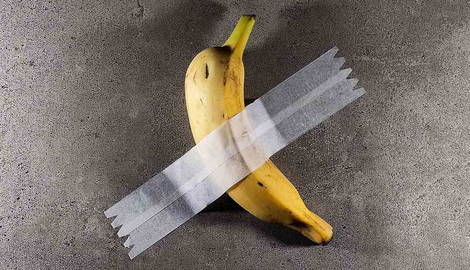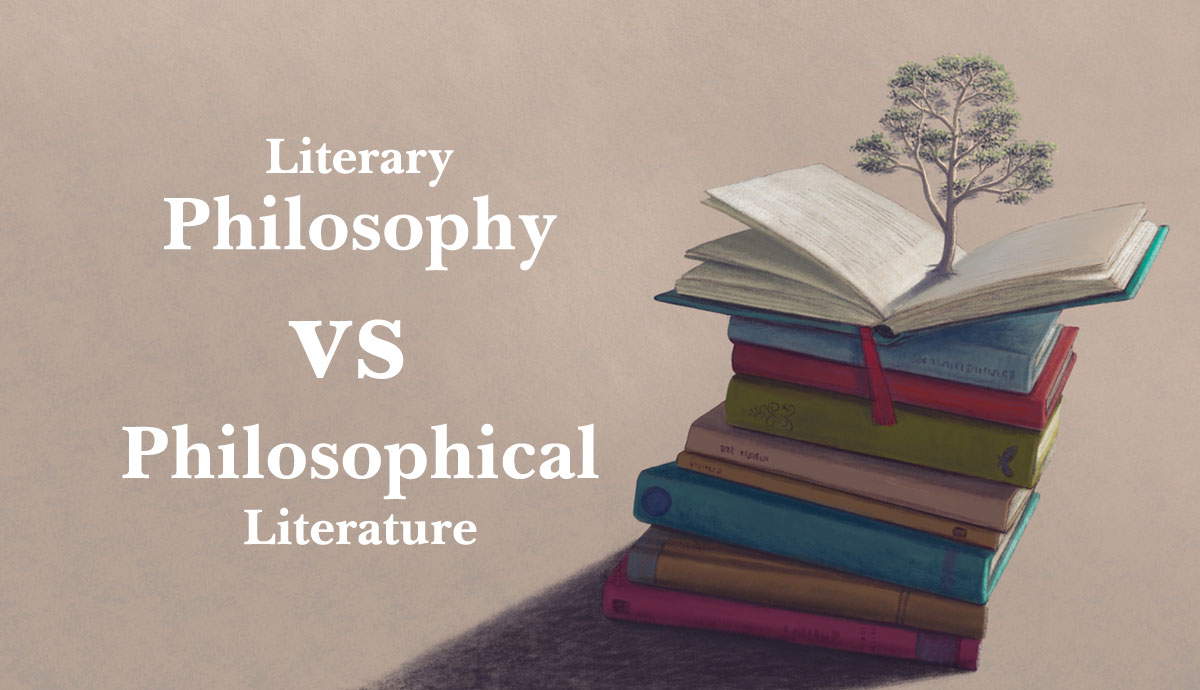
Most of us feel like we know what art is when we see it but cannot define it. Art institutions and the related professions that make up the art world must surely have something to do with conferring the status of art on objects, but do they always get it right? And if they do not, how can we tell? The institutional theory of art is an approach to defining art that seems to avoid this problem. But how convincing is it?
What Is Art?

What is art? It’s a question that many feel we can answer simply. However, when pressed for a definition, the task is surprisingly difficult. Suppose an alien visited us from another planet, one with no concept of art. How would we explain it to them? It would be tempting to take them to the nearest art gallery or museum and simply say, “Art is what you find in there.” But there are a few problems with this answer.
Firstly, even if we took our alien friend to one of the finest art galleries in the world—say, the Louvre in Paris, The Tate Modern in London, or the Metropolitan Museum of Art in New York City—we would find plenty of things inside that are not works of art. For example, items in the gift shop, signs on the walls, and tickets for the cloakroom are all found in art galleries but are not art. An alien, completely ignorant of the subject of art, may well ask why the painting on the wall is ‘art’ but the sign on the wall next to it is not. What would we tell them?
Secondly, there are many examples of what we usually consider to be art that is not found in museums and galleries. We would not, for example, typically hear a symphony inside a gallery or read a work of literature. Sculpture is considered art, and it is certainly not unusual to find sculptures in art galleries; however, many examples are found outside of galleries, too. The Singing Ringing Tree, a 2006 sculpture created by artists Mike Tonkin and Anna Liu, can be found on a hill in Burnley, England. It would be very odd to say this work is not art because it is not in an art gallery.
Who Gets to Decide?

Visited by a curious alien who asked us about art, we were tempted to point him in the direction of the nearest art gallery. However, we’ve seen two problems with this approach. Firstly, not everything in an art gallery or museum is art. Secondly, lots of things we would want to consider art are not found in art galleries. From the apparently simple question posed by the alien—what is art?—we find ourselves facing the opposite question: what is not art? And this introduces a third problem for us. Who gets to decide what counts as art?
It is commonplace for people to reply to questions about art with something like, “I cannot tell you what it is right now, but I know it when I see it.” The trouble with this approach, if we want to give the alien the best possible answer without adding personal bias, is that the status of ‘art’ can end up being conferred on a whim and decided simply on personal taste.
Returning to our original idea of taking the alien visitor to an art gallery, we can see the problem. It is well known that some objects offered as works of art in galleries are extremely controversial. Not in subject matter; artworks can, of course, be controversial. Rather, it is controversial in the idea that they are works of art at all. Consider British artist Tracey Emin’s extremely divisive piece My Bed (1998). What is offered as art is her actual bed that she had slept in for several days without getting up and only drinking alcohol. According to Emin, when she finally got up and saw the mess she had made, she considered that she had created art. Let us explore this idea.
The Problem of Ready-Made Art

Tracey Emin’s piece My Bed was exhibited in the Tate Gallery in 1998 and sold for over £2.5M in 2014. Yet questions still linger over whether it is truly a work of art. Interestingly, when Emin’s bed sold for such a considerable sum, a former lover of hers joked that he had an old bed of hers in his shed that he was willing to sell for £20K. We might ask ourselves why the bed in his shed is not art.
What interests us is the question of what is and is not art. While we would probably have no problem agreeing that a recognized artist’s painting or sculpture is indeed art, many still balk at the idea that Emin’s bed is art. Think of our alien friend—if we showed him My Bed, might he not say that Emin simply ‘found’ her messy bed rather than set out to create it? Biographically, this is true. Emin did not set out to create a work of art when she languished for days in bed. However, it is equally true that Emin is an artist, and she did indeed create the piece she offers as art. The issue here is over the idea of ‘readymade art.’
To consider something a work of art, is it enough that an artist says it is? Presumably, at some point, Emin blew her nose on a tissue; could she not offer that up as art? We worried earlier about telling our alien friend that anything we considered art is art, but if we agree that My Bed is art, are we not in danger of saying that anything an artist considers art is art?
Ready-Made Art

‘Readymades’ are objects found by artists and offered as works of art. Sometimes, these objects are presented by the artist in a way that is different from what they normally encounter. For example, Marcel Duchamp’s Fountain is a urinal placed on its back with the signature ‘R Mutt’ dated 1917 inscribed in black along one side. Duchamp later justified the piece by saying that it did not matter whether an artist had made the piece with their own hands, instead focusing on the fact that by presenting this object as art, the piece was transformed into art. We can see how this view relates to Tracey Emin’s bed.
As hinted at above, many refuse to accept Emin’s bed and works like it as art. For the sake of argument, let us say that we do not consider her piece art. If pressed by our alien friend, what could we say to show him that My Bed is not art? Equally, if we consider Emin’s piece art, how can we justify this to the alien?
We want to be able to say what is and is not art. And many feel that conferring the status of ‘art’ upon objects has something to do with the artworld. Yes, indeed, everyone might not agree that everything exhibited in an art gallery is, in fact, art, but most of us still believe that these institutions have a place in conferring the status of art. What is to be done?
This is where the institutional theory of art can help. Let us imagine telling our inquisitive alien guest, keen to learn what art is, to stand by while we examine this theory. We will begin with Arthur C. Danto and his idea of ‘the artworld’.
Arthur C. Danto

Arthur C. Danto once wrote about Andy Warhol’s Brillo cartons. These are deliberately made facsimiles of actual cartons made out of wood instead of the usual cardboard. The manufacturers of Brillo cartons always make them out of cardboard. However, it is possible that they could switch to using wood instead. And, if he wanted to, Warhol could make his art out of cardboard instead of wood. However, even if this were the case, the manufacturers would never create art, whereas Warhol still did. Of course, we could disagree that Warhol created art, but for the sake of argument, we will accept that he has.
Danto asks, quite reasonably—and we could easily imagine our alien friend asking the same question—why Warhol could not simply offer actual untouched Brillo cartons as his artworks. The real question is, what about Warhol making his own wooden version of everyday cartons that makes them works of art?
Danto argues that something must stop an actual Brillo box and a work of art that consists of a Brillo box from collapsing into each other. This thing, he says, must be a theory of art. We have been wondering what makes something a work of art, and, for Danto, we must understand there is something known as ‘the artworld’. He says that without the help of this artworld, we cannot catch sight of what is or is not art. This idea would be picked up by one of the most influential proponents of the institutional theory of art, George Dickie.
The Artworld

For Danto, the artworld is quite peculiar. He talks about viewing things identified as art in a way that the ordinary eye cannot descry. Only those capable of perceiving the artworld can see and correctly identify objects as works of art. It is useful to compare being able to descry the artworld with a psychic being able to see the ‘spirit world’. Danto is thinking of those people with a great deal of knowledge and expertise in art theory and the evaluation of artworks. These include artists, art connoisseurs, gallery owners, critics, influential collectors, and philosophers of art. Through a combination of natural talent and years of hard work, such people become sensitive to the artworld.
There is potential for confusion here. We sometimes refer to the social circles and institutions in which the kinds of people listed above move and operate as the ‘artworld’. To become a member of the artworld, a person must become one of the people listed above. For example, an artist, critic, or philosopher of art. Then, mix in the circles in which such people live and work. Here, we can compare the artworld with, say, the criminal underworld.
The criminal underworld refers to the places where criminals associate and ply their trade. For example, jewel thieves and the fences that buy their stolen items are members of the criminal underworld. When we compare the ‘spirit world,’ which is said to be where only a psychic can see, and the underworld in which criminals operate, we can see that they are two different kinds of things. However, the idea of the artworld refers to both these kinds of things: a world only grasped and seen by experts and the circles and institutions in which these experts operate.
George Dickie

George Dickie, the philosopher most associated with the institutional theory of art, draws upon Danto’s idea of the artworld. However, he is less interested in a plane of being only experts can discern. For Dickie, the artworld can be understood as simply the world of artists, art connoisseurs, gallery owners, critics, influential collectors, and philosophers of art.
Over time, Dickie has evolved a simple formula for discerning what art is. And it has become known as the institutional theory of art.
“A work of art is an artifact of a kind that is created to be presented to an artworld public.”
Works of art are artifacts, that is, human-made objects. It is important to note that these do not have to be physical objects. Dickie offers such things as poems and improvised dances as examples of non-physical artifacts. Put simply, artifacts are things humans create for some purpose and use.
Bear in mind that Dickie is not interested in saying what is good, bad, or even awful art. Indeed, restricting the description of something as ‘art’ to only things we think are in some way good defeats the purpose of finding a definition. After all, if we can only consider things that are good as art properly, how can we talk about bad art?
We have seen what the artworld is, but why does Dickie feel the need to add the word ‘public’? He wants to emphasize the fact that art is always presented to an audience. The ‘public’ he has in mind is not just anybody but a group of members of the artworld.
The Institutional Theory of Art

We can tell our inquisitive alien friend that, according to the institutional theory of art, art is a kind of artifact created to be presented to an artworld’s public. On entering an art museum or private gallery or visiting a public artwork like The Singing Ringing Tree in Burnley, we can clearly point out to the alien where the art is.
Items in the gift shop, signs, or nearby trees are artifacts but not of a kind created to be presented to the artworld’s public.
The alien might turn up his nose at, say, Damien Hirst’s The Practical Impossibility of Death in the Mind of Someone Living (1991). ‘Is that really art?’ he might ask, pointing to a stuffed shark suspended in formaldehyde. According to the institutional theory, it must be. If the alien does not appreciate the piece, it is still possible that Hirst’s creation is simply bad art. But, according to the theory, it is art nevertheless.
The alien might question the artifactuality of the piece. It was created over thirty years ago, and every part of it, including the shark, has been replaced. Can we still say this work is art? If we commissioned an exact replica from the same manufacturers, ours would surely not be art. The institutional theory can answer this. Our copy is not an artifact of a kind that is created to be presented to an art world public. Hirst’s piece is.
Finally, it is worth observing Dickie’s clever use of ‘of a kind’ in his formula. This allows for artworks that artists choose at the last moment not to be presented to the artworld. A piece shut in a drawer in the artist’s studio is still art because it is ‘of a kind’ that is usually presented to the artworld.










